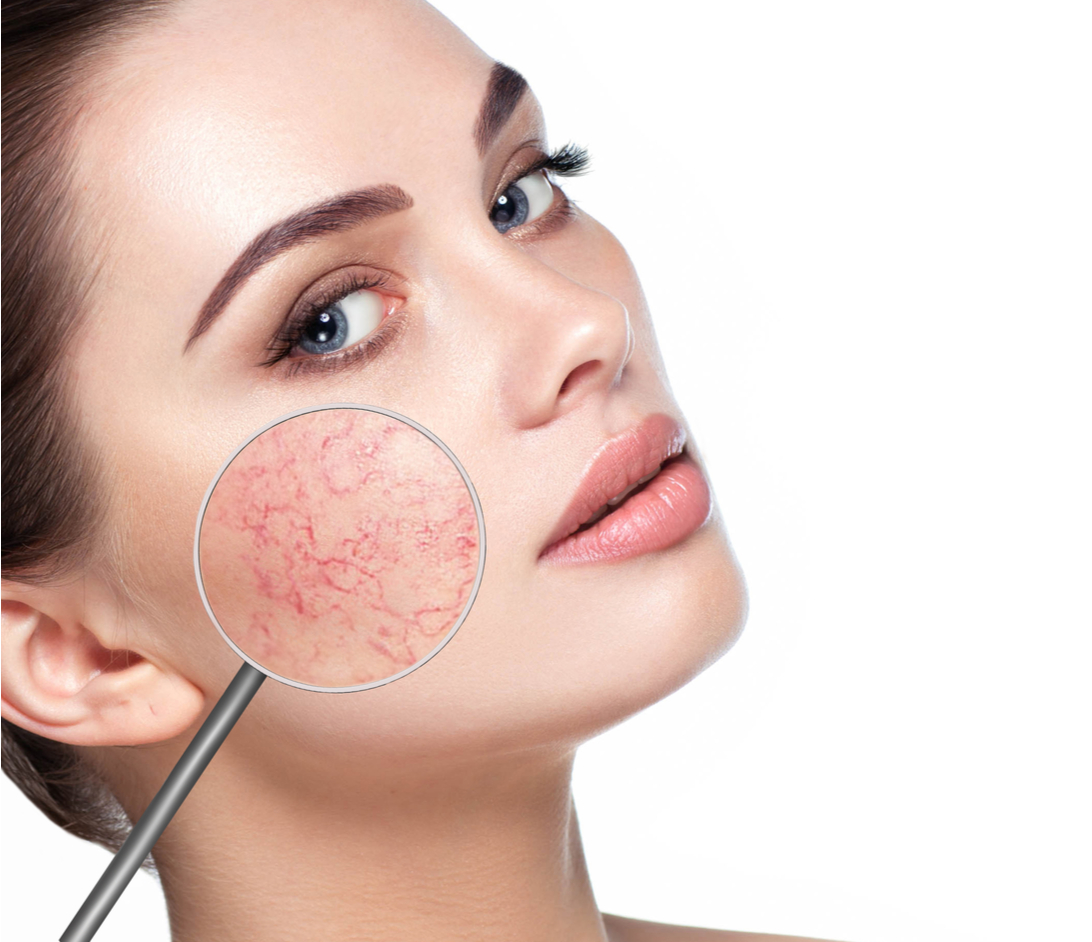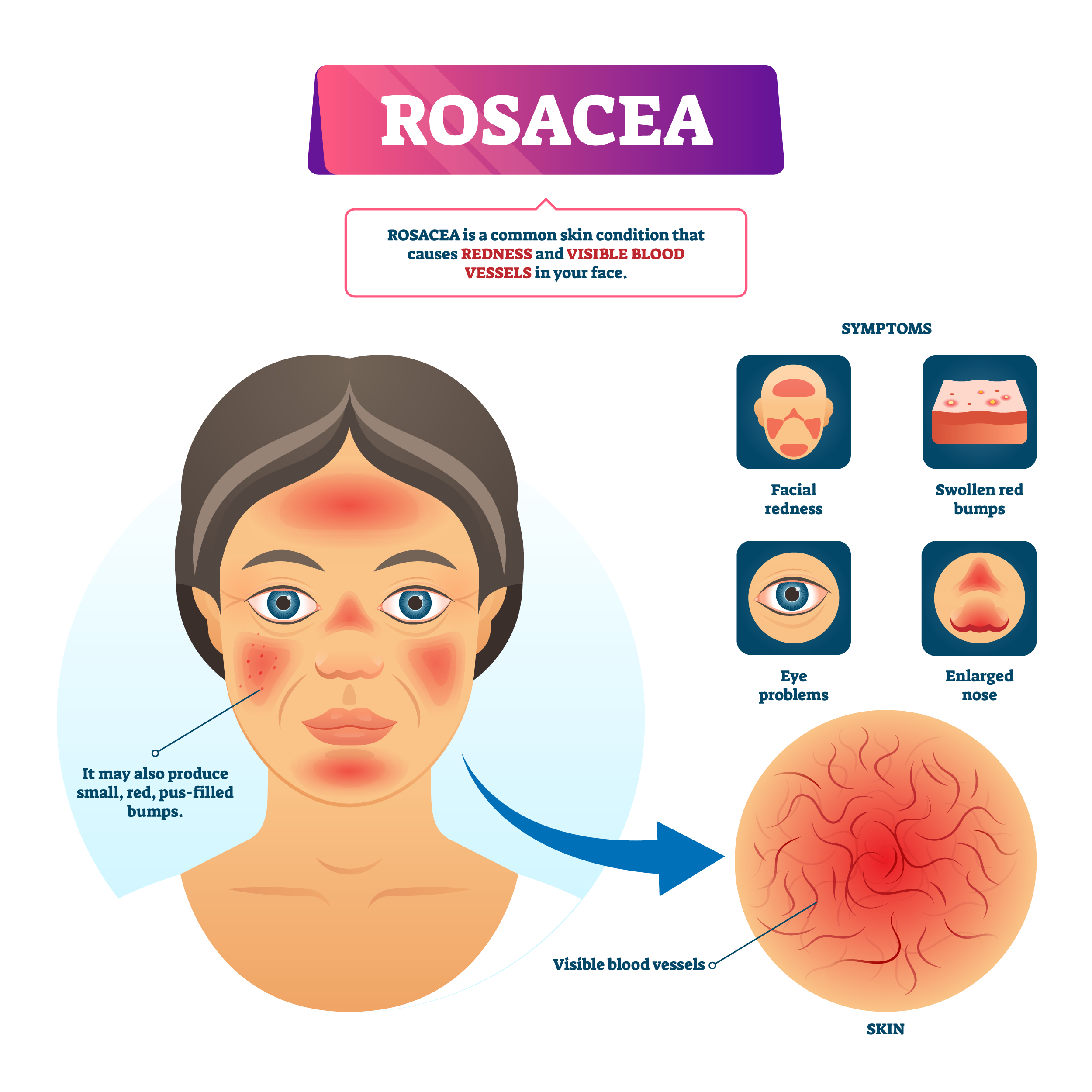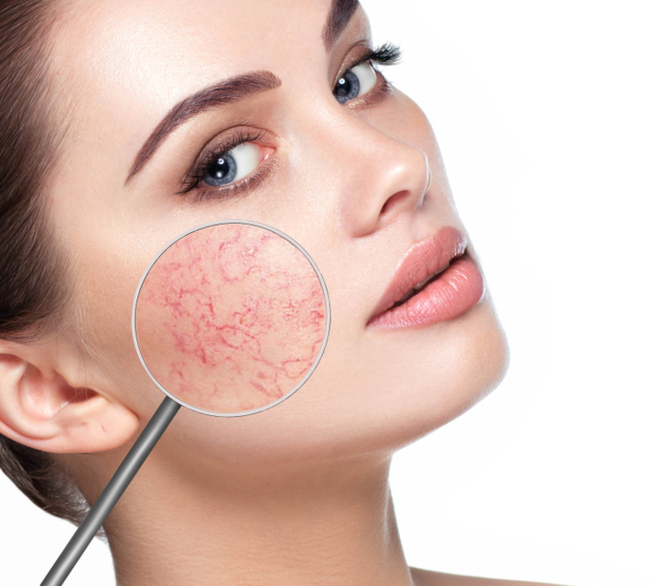ROSACEA
What is Rosacea?
Rosacea is a chronic skin condition that first appears as flushing or subtle redness in the mid face. While it usually comes and goes, rosacea symptoms can progress over time until the mild redness becomes ruddier and more permanent, involving most of the face. Tiny, dilated blood vessels appear, and bumps called papulopustular rosacea lesions can form.
Anyone can get rosacea, but it’s most common among fair-skinned women of northern European descent. It usually affects adults between the ages of 30 and 50. It’s commonly referred to as adult acne, but it often shows up for people who never experienced teenage acne. The telling difference between acne and rosacea is that rosacea lacks blackheads.
At its most extreme, rosacea on the face can thicken the skin, most commonly on the nose—a condition known as rhinophyma.

What causes rosacea?
Precisely what causes rosacea isn’t known, although many trigger factors have been identified. There’s some evidence that flares of rosacea are triggered by bacteria that live within tiny mites in the skin in people who are genetically susceptible to the disease.
- The sun can also be a major culprit in creating the extra blood vessels that cause the flushing in people prone to rosacea.
- Anything from sunlight to hairspray—imagine that—can cause an unexpected flare that can last for hours, causing your face to sting, burn, or itch for what feels like an eternity.
- Hormone fluctuations can also play a role. Some women first experience rosacea or see it get worse during pregnancy. Others have a flare-up during menopause.
- Other common rosacea triggers are spicy food, hot drinks, alcohol, exercise, stress, products that sting or feel tingly when applied, and extreme temperatures.
What causes your rosacea to flare may not have any effect on another person, so it’s important to know what aggravates your condition. “Knowing your triggers and making simple changes in your daily life can dramatically reduce rosacea flare-ups,” says Dr. Duff.

Can rosacea be cured?
There’s currently no surefire way to get rid of rosacea permanently, but the condition can be managed.
Start with avoiding anything that causes your rosacea symptoms to flare. Skincare can also play a big role in managing the symptoms of rosacea.
Wear sunscreen daily. Ultraviolet light is the leading rosacea trigger, according to the National Rosacea Society. Your first defense is a physical [mineral] sunscreen every day, whether you’re going to be spending a lot of time outside or not. Sunscreens can irritate sensitive skin, so mineral formulations (look for titanium dioxide or zinc oxide) may be better tolerated by people with rosacea.
Wash and shower with lukewarm water. Heat causes blood vessels to expand, which induces flushing.
Use gentle, hypoallergenic skin-care products formulated for sensitive skin. They’re fragrance- and alcohol-free and often contain ingredients like licorice extract that reduce redness.
What are the best aesthetic treatments for rosacea?
Lasers, light therapy, Retin-A, and even Botox can reduce facial flushing and redness.
Real Clients – Real Results
Daniella
★★★★★
“Great experience!! Zeiva is so knowledgeable. My daughter and I are definitely going back!!”
Dorothy
★★★★★
“Very professional! Just one treatment and I believe I already see an improvement!”
Helga
★★★★★
“I had the best experience here at this center. Very clean. Very professional. They went above and beyond, and I will definitely stay a long-time customer.”
Betsy
★★★★★
“I ❤ this place! Very professional and great prices. Excellent service!”
TREATMENT
We can help…
We’re here to help you achieve your desired look.
Choose from a variety of skin rejuvenation & body contouring procedures, along with corrective treatments for scars, unwanted hair, age spots and tattoos.
Our technically certified cosmetic estheticians will work with you to enhance your natural beauty.
Schedule a consultation today!



